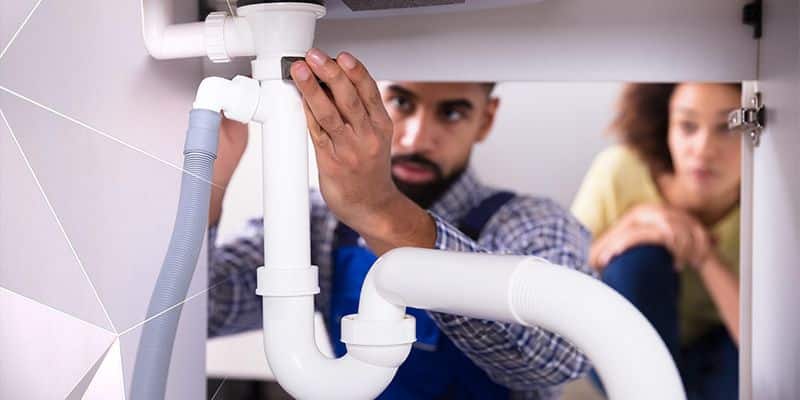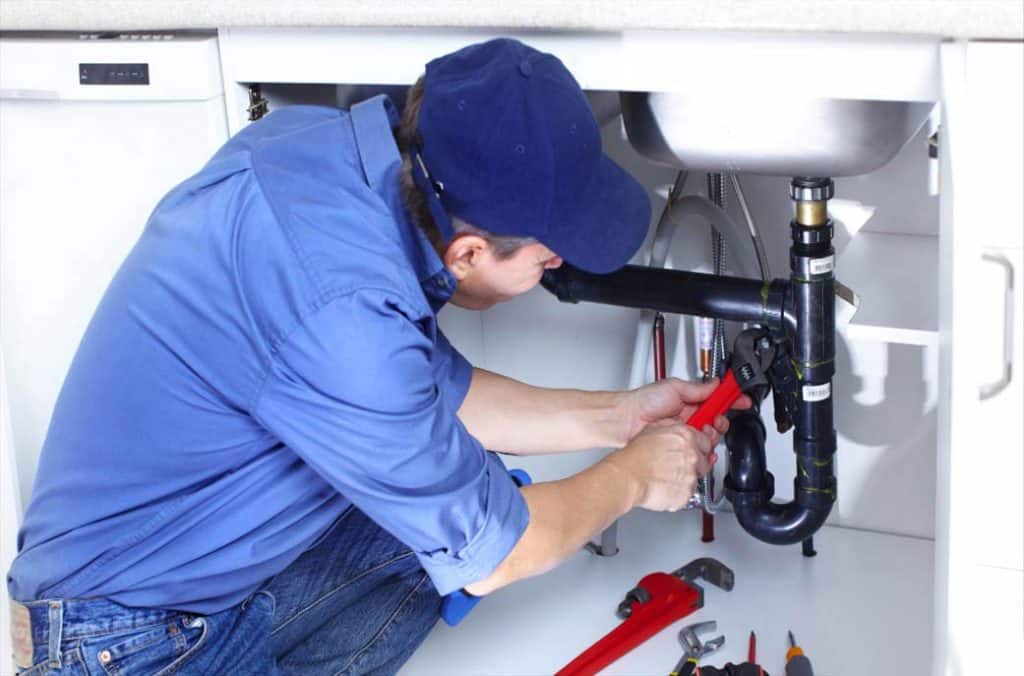Sewer line issues can be a major inconvenience for homeowners and property managers in New Caney. These issues can range from clogs and blockages to cracks and leaks and can lead to unpleasant odors, slow drains, and even sewage backups. When it comes to addressing these issues, there are two main options: sewer line repair and replacement. In this article, we will explore the differences between these two options, help you determine which one is the best choice for your specific situation, and provide tips on how to prevent sewer line issues in the future.
Understanding the Importance of Proper Sewer Line Maintenance
Proper sewer line maintenance is crucial for ensuring that your sewer lines continue to function properly. This includes regular inspections, cleaning, and repairs as needed. Neglecting your sewer lines can lead to serious issues down the road, such as blockages, leaks, and backups. In addition, regular maintenance can help extend the life of your sewer lines, saving you money in the long run.
Signs that Your Sewer Line Needs Repair or Replacement
There are several signs that indicate that your sewer line may need repair or replacement. These include:
- Slow drains: If you notice that your drains are slow to empty, it may be a sign that there is a blockage in your sewer line.
- Bad odors: If you notice a bad odor coming from your drains, it may be a sign that there is a problem with your sewer line.
- Sewage backups: If you notice sewage backing up into your home or yard, it is a sign that there is a serious issue with your sewer line that needs to be addressed immediately.
- Constant clogs: If you are frequently experiencing clogs in your drains, it may be a sign that your sewer line is damaged and needs to be repaired or replaced.
- Cracks or leaks: If you notice any cracks or leaks in your sewer line, it is an indication that your sewer line is damaged and needs to be repaired or replaced.
Sewer Line Repair Options
Sewer line repair is the process of fixing a damaged or malfunctioning sewer line in order to restore its normal functioning. This can include repairs to cracks, leaks, and other types of damage. Some of the most common sewer line repair options include:
- Trenchless Repair: Trenchless repair involves using a small access hole to repair the damaged section of the sewer line without the need for digging a trench. This method is often faster and less disruptive than traditional trench-based repair methods.
- Pipe Lining: Pipe lining is a method of repairing a damaged sewer line by inserting a new lining into the existing pipe. The lining is then inflated to fill the damaged area and create a new, smooth surface inside the pipe.
- Pipe Bursting: Pipe bursting is a method of repairing a damaged sewer line by breaking up the old pipe and replacing it with a new one. This method is typically used when the damage is too severe to be repaired using other methods.
Sewer Line Replacement Options
Sewer line replacement is the process of completely replacing an old or damaged sewer line with a new one. This is typically necessary when the damage to the existing sewer line is too severe to be repaired, or when the line is too old or deteriorated to function properly. When it comes to sewer line replacement, there are several options to consider, including:
- Traditional Excavation: This method involves digging a trench to access the damaged sewer line and replacing it with a new one. This method can be disruptive and time-consuming but is often the most cost-effective option for larger projects.
- Trenchless Replacement: Trenchless replacement involves using a small access hole to replace the sewer line without the need for digging a trench. This method is less disruptive and faster than traditional excavation but can be more expensive.
- Pipe Bursting: Pipe bursting is a method of replacing a damaged sewer line by breaking up the old pipe and replacing it with a new one. This method is typically used when the damage is too severe to be repaired using other methods.
Choosing the Right Sewer Line Replacement Option
When deciding on a sewer line replacement option, there are several factors to consider, including the severity of the damage, the age of the sewer line, and the cost of the replacement. It is important to consult with a professional plumber or sewer contractor to determine the best option for your specific situation.
Preventing Future Sewer Line Issues
Preventing future sewer line issues is crucial for ensuring that your sewer lines continue to function properly and avoid costly repairs. Here are a few tips to help prevent future sewer line issues:
- Regularly inspect your sewer lines: Checking your sewer lines for any signs of damage or deterioration is important for identifying issues early on. This can be done by a professional plumber or sewer contractor.
- Properly dispose of grease and oil: Grease and oil can cause blockages in your sewer lines, leading to serious issues. To prevent this, make sure to properly dispose of grease and oil by pouring them into a container and disposing of them in the trash.
- Plant trees and shrubs away from your sewer lines: Tree roots can cause damage to your sewer lines by cracking or breaking them. To prevent this, plant trees and shrubs at least 10 feet away from your sewer lines.
- Avoid flushing non-biodegradable materials: Flushing non-biodegradable materials such as wipes, sanitary napkins, and cleaning wipes can lead to blockages in your sewer lines. Only flush toilet paper and human waste.
- Have your sewer lines inspected and cleaned by a professional: Regularly having your sewer lines inspected and cleaned by a professional plumber or sewer contractor can help prevent blockages and identify issues early on. This can help extend the life of your sewer lines and save you money in the long run.
By following these tips, you can prevent future sewer line issues and ensure that your sewer lines continue to function properly. It’s also important to note that if you have an older home, it may be wise to have your sewer lines inspected by a professional to determine if they need to be upgraded or replaced.
At Abbie’s Plumbing LLC, our expert technicians can provide you with the highest quality sewer line repair and replacement services in New Caney, taking care to ensure no hidden surprises or unnecessary costs. Our experienced team is equipped with the latest technology and tools to diagnose, repair, or replace any sewer line issue quickly and effectively. Whether it’s a broken line, clogged drain, tree root intrusion, or any other issue, our team can get your sewer line back to optimal function so you can resume your daily routine with peace of mind.
Conclusion:
Sewer line issues can be a major inconvenience for homeowners and property managers in New Caney. Regular maintenance, repairs, and replacement are essential to ensure that your sewer lines continue to function properly. Understanding the different options available for repair and replacement, and consulting with a professional plumber or sewer contractor can help you make the best decision for your specific situation. By taking steps to prevent future sewer line issues and properly maintaining your sewer lines, you can save money and avoid costly repairs in the future.
FAQs
Q1. What are the signs that I need a sewer line repair?
A1: Signs that you may need a sewer line repair include a bad smell coming from drains, slow drainage, cracks in your foundation, pooling water near your foundation, and gurgling sounds coming from your drains.
Q2. What are the benefits of sewer line replacement?
A2: Sewer line replacement has many benefits, including improved water efficiency and quality, reduced water waste, and improved grease and sediment buildup. It can also provide a more reliable and durable connection between the home and the sewer line.
Q3. How much will a sewer line repair or replacement cost?
A3: The cost of a sewer line repair or replacement will vary depending on the type of repair or replacement that is needed. Generally, a sewer line repair or replacement can cost anywhere from $3,000 to $4,000.
Q4. What is the process for installing a new sewer line?
A4: The process for installing a new sewer line typically involves excavation, the installation of a new pipe, and then the connection of the new pipe with the existing drain lines.
Q5. What precautions should I take before and after a sewer line repair or replacement?
A5: Before a sewer line repair or replacement, make sure to turn off the water supply to your home. After the repair or replacement, you should also check for any leaks and have the line tested for leakage. Additionally, be sure to take precautions to protect your property when excavating and backfilling the area.














